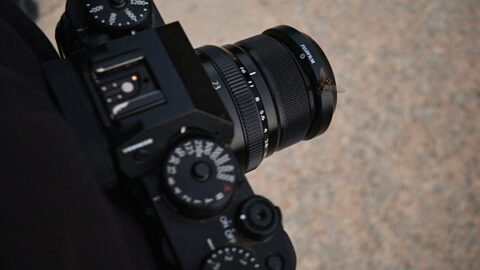When it comes to shooting video with your camera, you need to consider many factors. Whether you’re a beginner or an expert, various things can make or break the quality of your footage. One such important factor is focal length. Depending on the type of video that you’re making and the subject matter, different focal lengths will suit you better than others. These numbers represent how much zoom you get from your lens – for example, a 25mm lens has a narrower field of view than an 85mm lens. This article is about what focal length you should use for shooting video and when it makes sense to change it a little bit.
What Does Focal Length Mean?
Focal length is the distance between the lens and the sensor inside the camera. It determines what you can see in your frame and how much you can zoom in on your subject. For example, a 25mm lens will give you a broader view of the scene than an 85mm lens. At the same time, the 25mm lens will let you zoom in more on your subject than an 85mm lens.
The focal length is the distance between the lens and the sensor inside the camera. For example, a 50mm lens has a 50mm focal length. This distance determines what you can see in your frame and how much you can zoom in on your subject.
When to Use Which Focal Length
Wide angle lenses
- 14mm – 21mm: These are your wide-angle lenses. They cover a lot of ground but are not very good at getting close-up shots. They are commonly used for landscape photography.
Normal lenses
- 24mm – 35mm: A normal lens is a “standard” focal length. Perfect for portraits and videos of people. It will allow you to get the full body shot and zoom in close enough on their face to see every detail.
Telephoto lenses
- 85mm – 135mm: These lenses are excellent for close-up shots of people and objects. They are also great for portrait photography. Telephoto lenses are beneficial. For example, a 100mm focal length allows the photographer to take images during a wedding without being too intrusive while shooting in the church.
Super telephoto lenses
- 135mm – 300mm: Ideal for landscape photography as they allow you to crop into the scene and still get everything in the frame without moving closer to the subject. They are also handy for sports photography.
Shooting Techniques for Each Focal Length
Wide angle lenses
- 14mm – 21mm: When shooting with a wide angle lens, try to avoid the “fisheye” effect. You can prevent it by either zoom in a bit or standing farther away from your subject. You can also use a “tilt and shift” lens. When you shoot with a wide-angle lens, use a tripod because even a slight movement will make your video look shaky.
Normal lenses
- 24mm – 35mm: Normal lenses are great for shooting indoors or in small spaces. You can get close to your subject without being in the shot yourself. Normal lenses are also great for shooting interviews and conferences.
Telephoto lenses
- 85mm – 135mm: When shooting with a telephoto lens, ensure you stand far enough away from your subject to avoid the “magnification” effect. Also, use a tripod when shooting with a telephoto lens.
Super telephoto lenses
- 135mm – 300mm: When shooting with a super telephoto lens, ensure that you stand farther away from your subject than you would be with a telephoto lens. Super telephoto lenses are also ideal for shooting wildlife or sports.
Conclusion
This article explored the various focal length options and their uses. There are many things to consider when deciding what focal length to use, such as your subject matter, the type of video you’re shooting, and the framing you would like to achieve. We hope this article will help you understand focal length better and make better decisions when choosing your lens. Now that you know what focal length means and standard focal lengths, you can make better decisions when shooting video with your camera. Selecting the right focal length is essential to creating high-quality videos, so keep this information in mind the next time you’re shooting a video.
